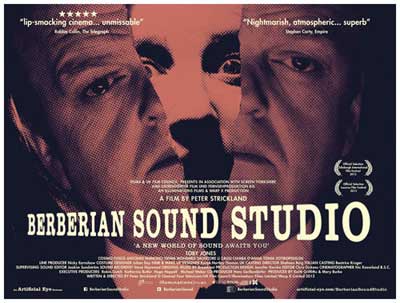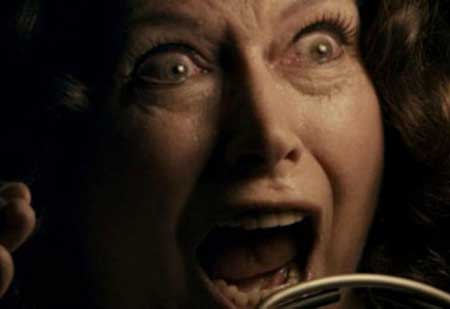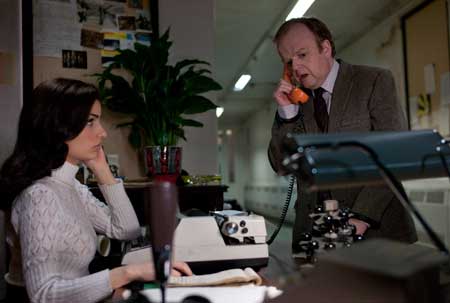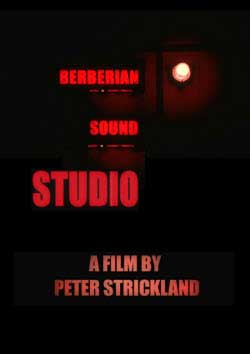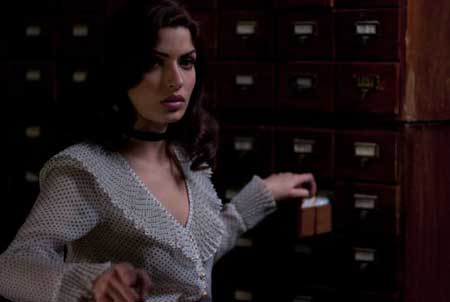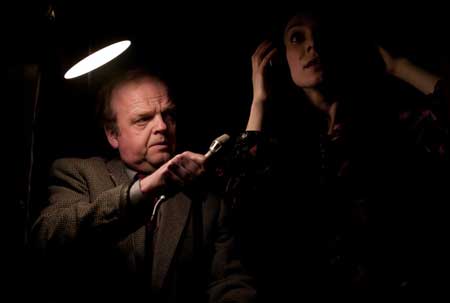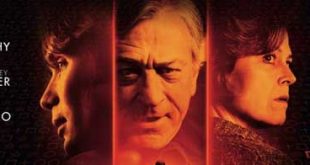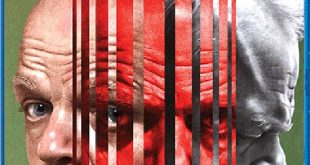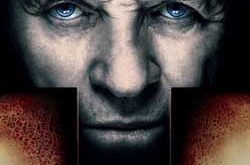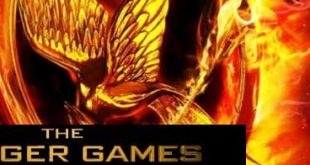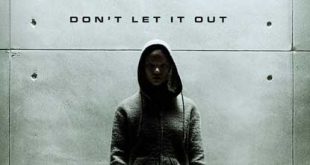SYNOPSIS:
A sound engineer’s work for an Italian horror studio becomes a terrifying case of life imitating art.
REVIEW:
There is a scene, early on in “Berberian Sound Studio“, in which an hirsute Foley artist mutely and mercilessly bludgeons a watermelon to a shattered pulp, while his partner hacks and stabs a second melon. The whole thing is shot with the kind of fetishistic close-ups and aggressive editing of a slasher film. What we hear, however, is the monstrous squelching of torn flesh and shattered bones.
Foley, for those who haven’t had the good fortune to witness that strange black art, is the process of recording sound effects for a film while watching the picture, and hopefully doing everything in synch. It’s a fascinating process, and one which hasn’t changed very much since the `70’s (which is, incidentally, when “Berberian Sound Studio” takes place).
The film follows mild-mannered British sound mixer Gilderoy (Toby Jones), who is flown to Italy and hired to supervise the soundtrack for a bizarre and ultra-violent Italian film. Accustomed as he is to his usual work on English children’s TV, Gilderoy is appalled by what he sees. And the film-within-the-film, “The Equestrian Vortex”, certainly is appalling; a lurid gothic tale filled to overflowing with gore and gristle, torture and sadism. As Gilderoy feverishly builds the soundtrack, we watch as the film gets under his skin and slowly erodes his sanity.
And yet, we the audience do not see a single frame of “The Equestrian Vortex” beyond the lurid title sequence. Our experience of this seemingly lost masterpiece of Giallo cinema is entirely second-hand: Gilderoy’s horrified reaction, the tortuous dubbing sessions, and the cryptic stacks of audio cue-sheets. It’s a rather jarring effect for an audience, and leaves us adrift without context. Then again, linear narrative was rarely a priority among the Giallo masters such as Mario Bava, Lucio Fulci, or Dario Argento.
It is abundantly clear that Director Peter Strickland has a real connoisseur’s appreciation of the great Italian horror cinema of the 70’s. I was fortunate to see the film at the Toronto International Film Festival, as Mr. Strickland entertained questions from the audience once credits finished rolling. He’s a fellow who really knows his Giallos, rhapsodizing at length on Ennio Morricone’s score for “The Bird with the Chrystal Plumage”. In fact, familiarity with that particular period and style extends well beyond what’s up on the screen, and into the techniques of production.

Anyone who is the least bit interested in the birth of what we now call “sound design” will appreciate Strickland’s fascination with analogue audio. “Berberian Sound Studio” takes place almost entirely in the dark and claustrophobic confines of a mixing room and the adjacent Foley stage. The frame is packed with vintage gear and technical detail, and the sound track is awash in the clatter of projectors, the whirr of open-reel tape recorders, and the slither of room-filling tape delays. Meticulous care was taken to immerse the audience in the feel of a `70’s Italian horror soundtrack complete with lush echo-delays and grinding distortion, and that is part of what is most striking about this film; it doesn’t so much unfold up on the screen, as it hatches between the audience’s ears. This is the theatre of the mind, as surely as were the eerie radio dramas of the `50’s. As Gilderoy’s sanity ebbs, the sound becomes increasingly expressionistic and unnerving, until Strickland and his audio post-production team outdo themselves in a moment of shattering ingenuity and effectiveness (which I will not reveal, for the sake of the spoiler-averse).
I find it a rare and joyful thing to see a horror film carried so effectively by well-crafted sound design. In that respect, I’d certainly list “Berberian Sound Studio” with “The Exorcist” and “Session Nine” as outstanding examples of horror sound.
Technical artistry aside, “Berberian” is a slow-burning psychodrama like one might find an early Polanski picture. If you’re looking for the quick “gotcha” of a cat suddenly (and loudly) jumping out a cupboard to startle the audience, you’re likely to be disappointed, likewise if you’re after visually inventive kills and arterial spray. Indeed, the grotesque violence in the film is performed entirely on produce, with mutilated zucchini and cabbages heaped up like corpses in the Foley pit. Perhaps that’s part of the fun, though: the audience already knows filmic violence is all karo syrup and rubber knives. We know going in that what we see is so much artifice. “Berberian Sound Studio” throws us off-balance us by showing the artifice itself, stripped of context. What we’re left with is the story of a sound guy who probably hasn’t slept in days, and is losing his grip on reality.
Berberian Sound Studio (2012)
 Horror News | HNN Official Site | Horror Movies,Trailers, Reviews
Horror News | HNN Official Site | Horror Movies,Trailers, Reviews
